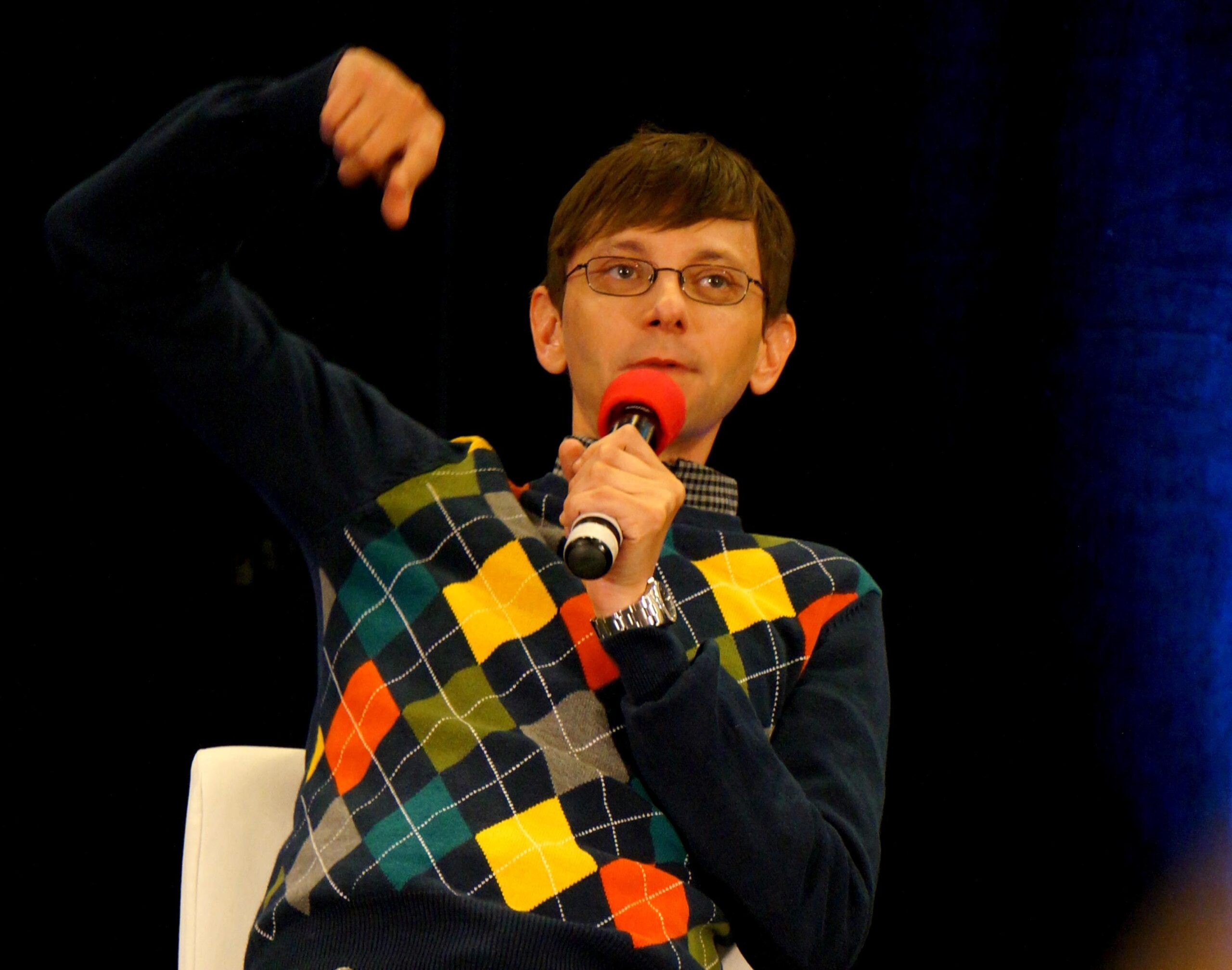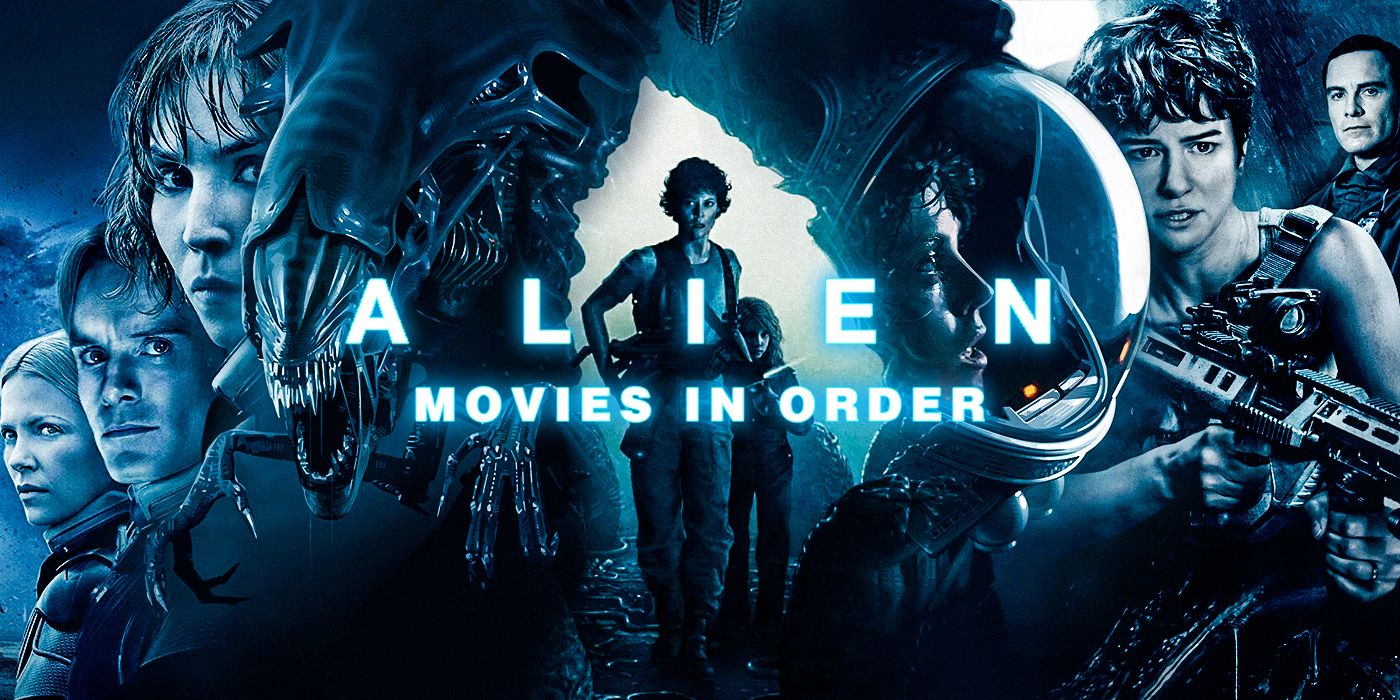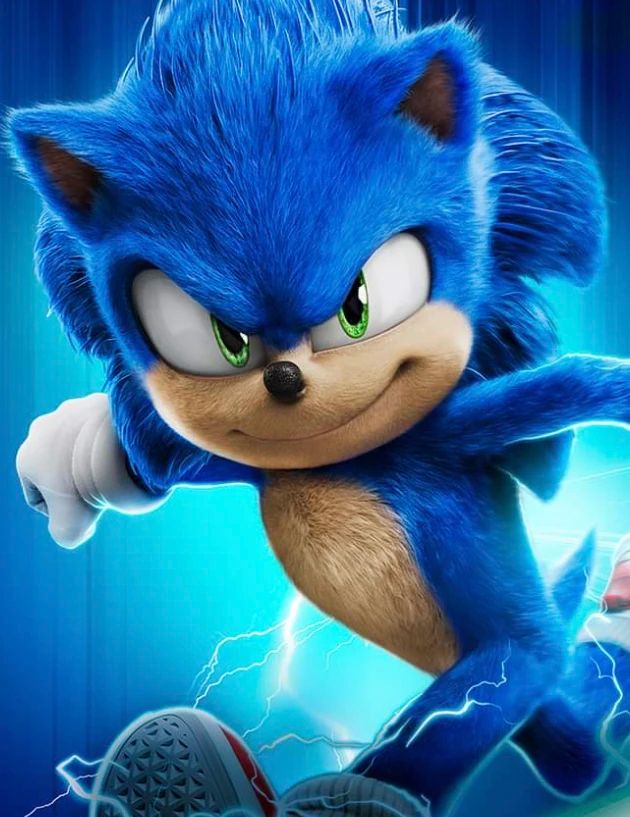
Prepare to embark on an exhilarating journey through the vibrant, high-speed world of Sonic the Hedgehog, Sega’s flagship media franchise that has captivated audiences for over three decades. This is more than just a video game series; it’s a sprawling universe born from the creative minds of Japanese developers Yuji Naka, Naoto Ohshima, and Hirokazu Yasuhara, designed to give Sega a powerful mascot capable of challenging the titans of the gaming industry.
Since its inception in 1991, the franchise has continually evolved, bringing us the anthropomorphic blue hedgehog with unmatched super-speed, forever locked in battle with the nefarious mad scientist, Doctor Eggman, and his formidable robot army. While the core experience revolves around thrilling platformers primarily crafted by Sonic Team, the Sonic universe has expanded far beyond, embracing spin-offs in racing, fighting, party, and sports genres. It has transcended gaming consoles to become a true multimedia juggernaut, encompassing printed media, animations, films, and a vast array of merchandise.
Our story begins in 1990, a pivotal moment when Sega sought to establish a significant presence in the video game console market with its 16-bit powerhouse, the Sega Genesis. Nintendo’s formidable dominance had consistently stifled Sega’s ambitions, leaving the Genesis without a substantial install base and Nintendo viewing Sega as a minor player. Michael Katz, then CEO of Sega of America, spearheaded the aggressive “Genesis does what Nintendon’t” marketing campaign, even collaborating with athletes and celebrities to create new games in a direct challenge to Nintendo’s market leadership.
However, these initial valiant efforts proved insufficient to dislodge Nintendo’s firm grip on the industry, leading to Katz’s replacement by Tom Kalinske, formerly of Mattel. It was Sega president Hayao Nakayama who recognized the pressing need for a distinctive flagship series and a memorable mascot to directly compete with Nintendo’s highly successful Mario franchise, especially after the immense success of Super Mario Bros. 3, which at the time held the record as the best-selling video game ever. Nakayama astutely understood that merely porting Sega’s popular arcade games to the Genesis wasn’t enough; the company desperately needed a charismatic star character featured in a game that could genuinely showcase the raw power and capabilities of the Genesis hardware.
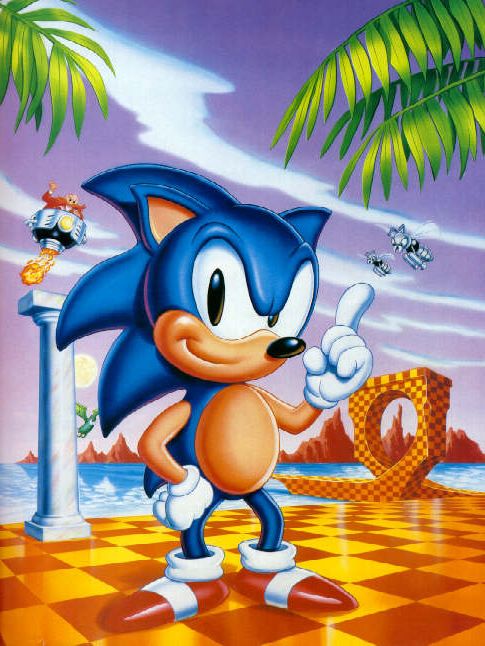
To address this critical need, an internal contest was initiated to identify a groundbreaking flagship game, with a particular emphasis on appealing to the American audience. Among the visionary teams participating were artist Naoto Ohshima and programmer Yuji Naka, whose collaborative efforts would soon redefine the gaming landscape. The foundational gameplay of the original Sonic the Hedgehog, released in 1991, emerged from an innovative tech demo crafted by Naka. He had ingeniously developed an algorithm that enabled a sprite to move with remarkable smoothness on a curve, precisely determining its position using a dot matrix. Naka’s initial prototype was a dynamic platform game that featured a character moving at incredible speeds, rolling into a ball, and navigating through an intricately designed, long winding tube.
Sega management, recognizing the immense potential in their concept, enthusiastically approved the duo’s ambitious project. Soon after, they were joined by the talented designer Hirokazu Yasuhara, forming the core creative triumvirate behind the blue blur. As Yasuhara integrated into the team with Naka and Ohshima, their collective focus intensified on developing the protagonist—the character Sega fervently hoped would become its new, iconic mascot.
Interestingly, the protagonist’s initial concept was a rabbit, uniquely capable of grasping objects with its prehensile ears, a novel idea that ultimately proved too intricate and demanding for the existing hardware limitations. The team then shifted their creative direction, exploring various animals that could roll into a ball, a mechanic central to Naka’s prototype. This iterative process finally led them to the iconic design of Sonic, a vibrant teal hedgehog, expertly crafted by Ohshima, whose design perfectly encapsulated the desired speed and agility.
The expansion of Naka’s groundbreaking prototype was further enhanced by Ohshima’s distinctive character design and the imaginative levels meticulously conceived by Yasuhara. Sonic’s signature color was deliberately chosen to perfectly complement Sega’s vivid cobalt blue logo, creating an immediate and undeniable brand connection. His striking red and white shoes, a detail that has become instantly recognizable, drew their inspiration from the iconic cover of Michael Jackson’s 1987 album, *Bad*. His energetic and determined personality was consciously modeled after then-Governor of Arkansas Bill Clinton’s “can-do” attitude, giving the character a relatable and aspirational quality.
The creation of Sonic’s arch-nemesis, Doctor Eggman, also stemmed from Ohshima’s earlier designs submitted for the internal contest. The team, recognizing the abandoned design’s inherent excellence, ingeniously repurposed and redesigned it as the perfect villain, adding depth and intrigue to the burgeoning Sonic universe. For the game’s release, the dedicated development team proudly adopted the name Sonic Team, a moniker that would soon become synonymous with innovative and thrilling gaming experiences.
Before his official game debut, Sonic made a surprising first appearance as a subtle ornament hanging from the driver’s rearview mirror in Sega AM3’s racing game, *Rad Mobile*, released in 1991, a full five months before *Sonic the Hedgehog* hit the shelves. The developers of Sonic, keen on generating early public visibility for their new mascot, graciously permitted AM3 to feature Sonic in this cameo. Despite this early exposure, Mark Cerny, who served as an intermediary between Sega’s Japanese and American offices in Tokyo, observed that the American staff harbored significant doubts, feeling that Sonic possessed no intrinsic appeal to Western audiences.
Even Michael Katz, the then-CEO of Sega of America, expressed certainty that Sonic would not resonate with American children, a sentiment that underscored the initial skepticism surrounding the character’s marketability. However, Tom Kalinske, demonstrating his keen business acumen, made a crucial decision: he strategically arranged for *Sonic the Hedgehog* to be bundled as the pack-in game with the Genesis console. This bold move, combined with the game’s inherently speedy and captivating gameplay, garnered immediate critical acclaim.
The game’s release dramatically boosted Genesis sales, especially in North America, and is widely credited with playing a pivotal role in helping Sega capture an impressive 65% of the market share against its formidable competitor, Nintendo. This period marked a true turning point, transforming Sega into a leading video game company during the fiercely competitive fourth generation of video game consoles in the early 1990s, solidifying Sonic’s place as a gaming icon.
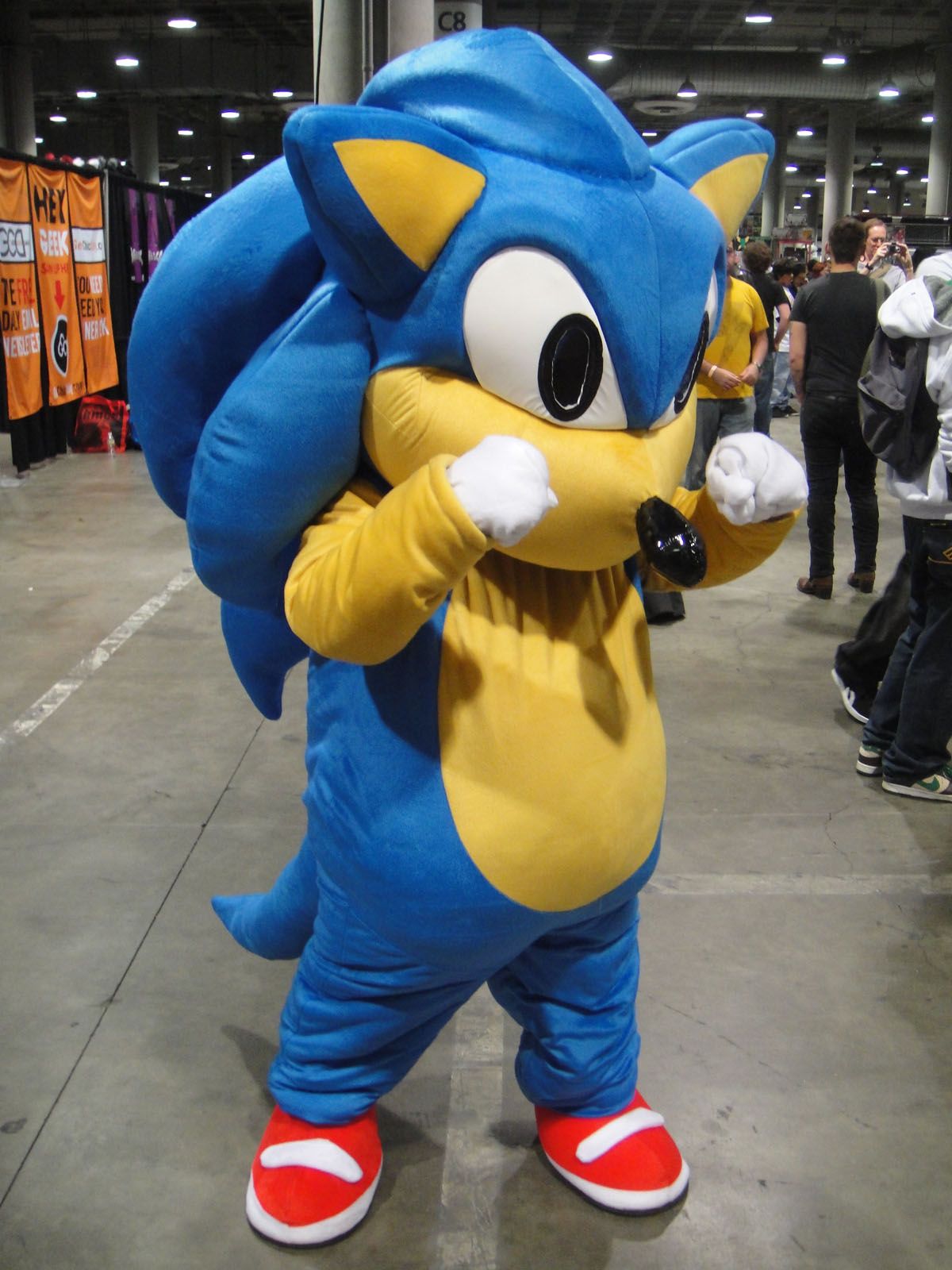
Following the groundbreaking success of the original *Sonic the Hedgehog*, Yuji Naka, despite his pivotal role, felt a distinct lack of credit and satisfaction with his treatment at Sega, leading him to resign. Fortunately, Mark Cerny, recognizing Naka’s invaluable talent, quickly rehired him to work at the US-based Sega Technical Institute (STI), offering a more attractive salary and, crucially, greater creative freedom. Hirokazu Yasuhara also made the move to STI, reuniting key creative forces for the next chapter of Sonic’s journey.
In November 1991, STI commenced work on *Sonic the Hedgehog 2*, a highly anticipated sequel. It was during this development that level artist Yasushi Yamaguchi introduced Sonic’s beloved new sidekick, Tails, a charming flying two-tailed fox whose design was cleverly inspired by the mythological kitsune. Like its predecessor, *Sonic the Hedgehog 2* achieved monumental success, further cementing the franchise’s popularity. However, its development was not without challenges, notably suffering from significant language barriers and cultural differences between the Japanese and American development teams, highlighting the complexities of international collaboration.
As development on *Sonic 2* reached its conclusion, Mark Cerny departed, and Roger Hector assumed his role. STI then strategically divided its forces into two distinct teams: the Japanese developers, under the seasoned leadership of Naka, and the American developers. The Japanese team immediately began work on *Sonic the Hedgehog 3*, which initially explored an isometric perspective utilizing the Sega Virtua Processor chip. However, due to delays with the chip, the project was re-envisioned as a more conventional side-scrolling game, ensuring its timely release.
This installment also introduced Sonic’s formidable rival, Knuckles the Echidna, a captivating character created by artist Takashi Thomas Yuda, who quickly became a fan favorite. Constraints imposed by an impending promotional campaign with McDonald’s and limitations on cartridge size necessitated a strategic decision to split the project into two distinct releases. The first half, *Sonic 3*, was launched in February 1994, followed a few months later by the second, *Sonic & Knuckles*.
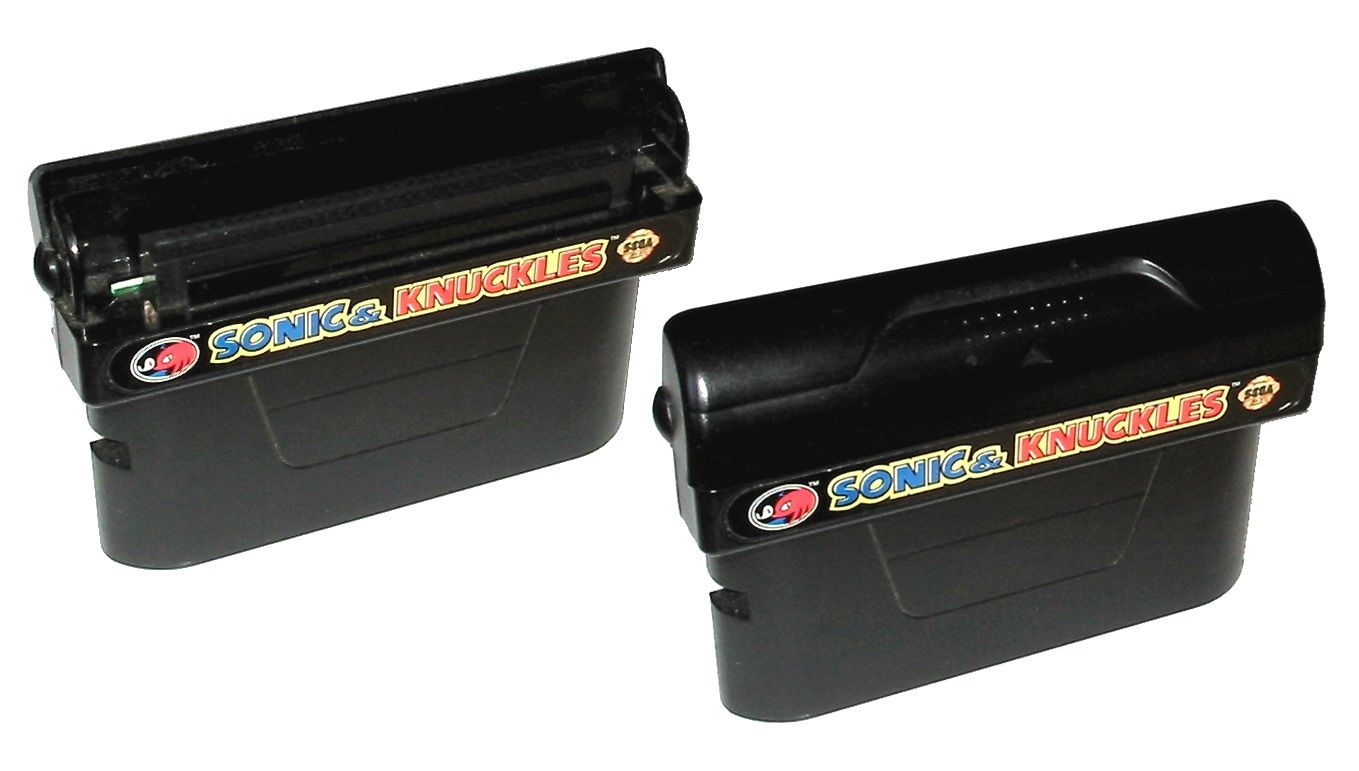
The *Sonic & Knuckles* cartridge featured an innovative adapter, a groundbreaking piece of technology that allowed players to physically connect it to the *Sonic 3* cartridge, thereby creating a seamlessly combined and expanded game known as *Sonic 3 & Knuckles*. Both *Sonic 3* and *Sonic & Knuckles*, much like their critically acclaimed predecessors, were met with widespread praise, further solidifying the series’ reputation for high-quality platforming. To ensure a Sonic game was available for the crucial 1993 holiday shopping season, Sega wisely commissioned the American team to develop a new spin-off game, *Sonic Spinball*, which, despite receiving mixed reviews, sold remarkably well and helped to enhance the reputation of its dedicated developers.
During this prolific period, a notable number of Sonic games were also meticulously developed for Sega’s 8-bit consoles, specifically the Master System and the handheld Game Gear, expanding the franchise’s reach to a broader audience. The very first of these, an 8-bit adaptation of the original *Sonic*, was skillfully developed by Ancient and released in December 1991, primarily to promote the newly launched Game Gear. Aspect Co. took the lead on the majority of subsequent 8-bit Sonic titles, commencing with *Sonic 2*, consistently delivering quality experiences to a dedicated fanbase.
Other significant Sonic games released during this vibrant era include *Dr. Robotnik’s Mean Bean Machine* (1993), a Western localization of the popular Japanese puzzle game *Puyo Puyo* (1991), cleverly re-skinned with Sonic characters to appeal to a broader Western audience. Also noteworthy was *SegaSonic the Hedgehog* (1993), a unique arcade game featuring engaging isometric gameplay, offering a fresh perspective on the fast-paced action. Finally, *Knuckles’ Chaotix* (1995), a compelling spin-off for the Genesis’s 32X add-on starring Knuckles, further showcased the versatility of the Sonic universe, introducing new characters and mechanics.
Following the successful release of *Sonic & Knuckles*, Yuji Naka made his return to Japan, accepting a new role as a producer within Sega. He was happily reunited with Naoto Ohshima and brought with him Takashi Iizuka, who had previously collaborated with Naka’s team at STI. This reunion marked a significant turning point, as Sonic Team was officially established as a distinct brand, setting the stage for future groundbreaking projects. Their initial focus as a newly branded entity was on developing an entirely new intellectual property, *Nights into Dreams* (1996), specifically for Sega’s 32-bit Saturn console.
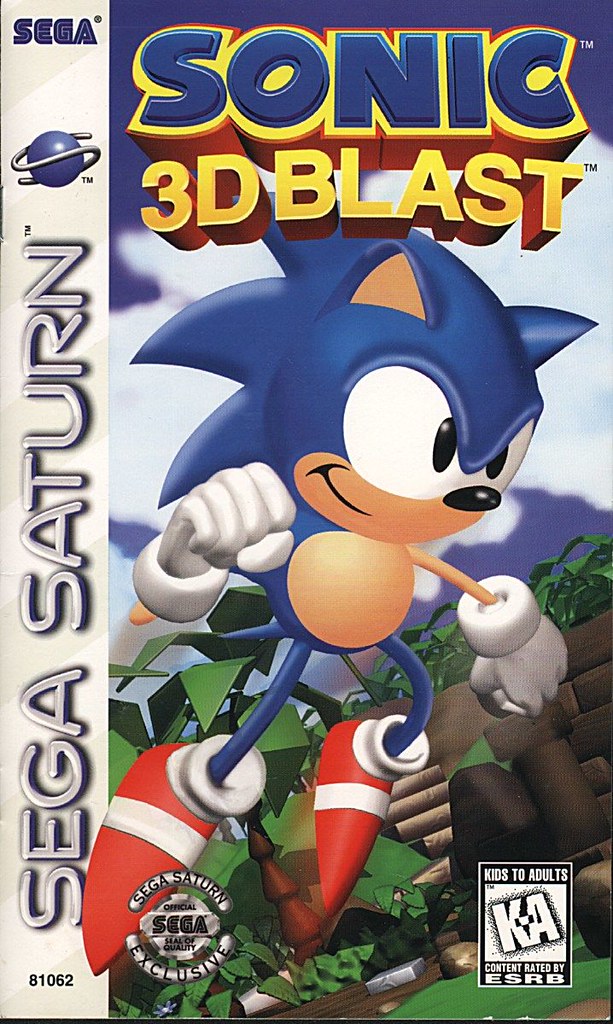
In 1996, as the Genesis console neared the end of its lifecycle, Sega strategically released *Sonic 3D Blast*, an isometric game that ingeniously revisited the original *Sonic 3* concept. This decision was made to leverage the Genesis’s still considerable install base, serving as a swan song for the system and its dedicated players. With Sonic Team fully preoccupied with the development of *Nights*, the production of *3D Blast* was expertly outsourced to the British studio Traveller’s Tales, ensuring its timely delivery. While *3D Blast* achieved solid sales, it garnered criticism for its gameplay, controls, and a perceived slow pace, indicating the challenges of adapting the Sonic formula.
Simultaneously, in America, STI was diligently working on *Sonic X-treme*, an ambitious 3D Sonic game for the Saturn, specifically slated for the crucial 1996 holiday shopping season. However, its development was plagued by numerous difficulties, including contentious disputes between Sega of America and Japan, Naka’s reported refusal to allow STI to utilize the *Nights* game engine, and persistent challenges in successfully adapting the beloved series to a true 3D environment. The project ultimately faced its demise after two lead developers became severely ill, leading to its unfortunate cancellation.
Journalists and dedicated fans alike have frequently speculated about the potential impact *X-treme* might have had if it had seen the light of day. Producer Mike Wallis expressed his firm belief that it “definitely would have been competitive” with the seminal first 3D Mario game, *Super Mario 64* (1996), underscoring the missed opportunity. Due to *X-treme*’s cancellation, Sega opted to port *Sonic 3D Blast* to the Saturn, enhancing it with updated graphics and exciting bonus levels developed by the now-established Sonic Team.
In 1997, Sega made a significant announcement with “Project Sonic,” an ambitious promotional campaign explicitly aimed at boosting market awareness and reigniting excitement for the venerable Sonic brand. The inaugural release under Project Sonic was *Sonic Jam*, a comprehensive compilation that featured the main Genesis Sonic games. This compilation notably included a 3D overworld, which Sonic Team ingeniously used as a sandbox to experiment with and refine their approach to 3D Sonic gameplay, laying crucial groundwork for future titles.
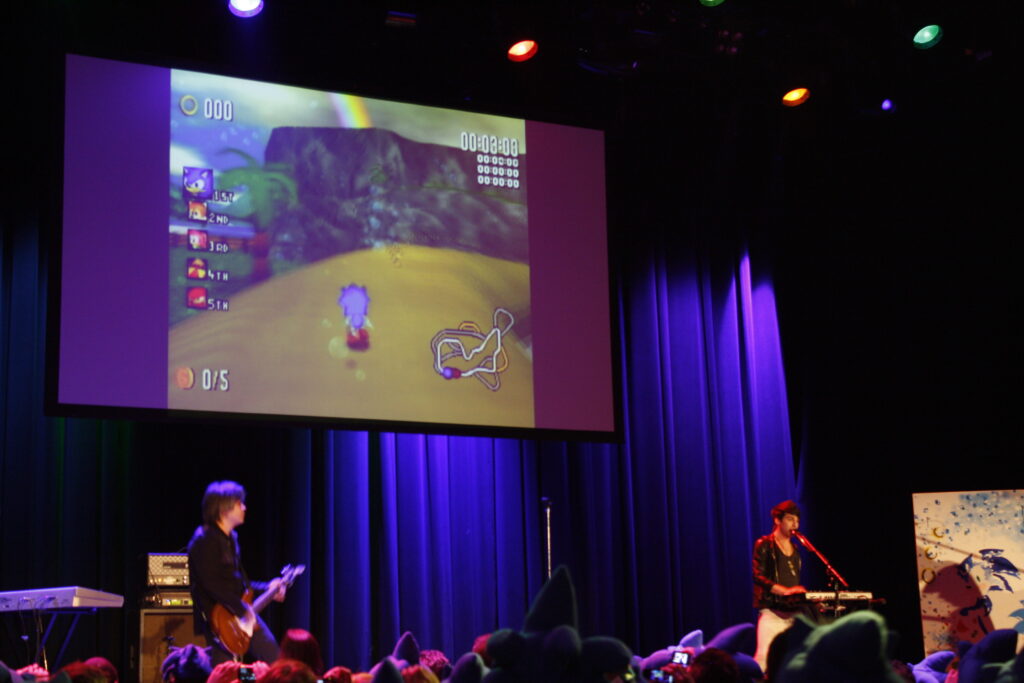
Sonic Team and Traveller’s Tales once again collaborated on the second Project Sonic game, *Sonic R*, a dynamic 3D racing game that stood as the only original Sonic game specifically developed for the Saturn console. Hirokazu Yasuhara even relocated to London to personally assist with *Sonic R*’s development, emphasizing its importance. While *Sonic Jam* was generally well received, reviews for *Sonic R* were more divided, reflecting the ongoing challenges of translating Sonic’s speed to 3D environments. The cancellation of *Sonic X-treme*, coupled with the Saturn’s general scarcity of compelling Sonic games, is widely considered a significant factor in the Saturn’s ultimate commercial failure. As Nick Thorpe of *Retro Gamer* aptly observed, “By mid-1997 Sonic had essentially been shuffled into the background… it was astonishing to see that just six years after his debut, Sonic was already retro.
Leveraging their valuable experiences from the *Sonic Jam* experiments, Sonic Team embarked on the ambitious task of developing a groundbreaking 3D Sonic platformer, initially envisioned for the Saturn. This transformative project originated from a compelling proposal by Takashi Iizuka, who advocated for a Sonic role-playing video game with a strong emphasis on storytelling, aiming to deepen the narrative experience for players. Development swiftly transitioned to Sega’s innovative new console, the Dreamcast, which Yuji Naka firmly believed would provide the ultimate platform for realizing the definitive Sonic game.
*Sonic Adventure*, directed by Iizuka and launched in 1998, proudly stood as one of the very first sixth-generation video games, setting a new benchmark for console gaming. It masterfully introduced several elements that would become enduring staples of the series, including artist Yuji Uekawa’s refreshed character designs, which were distinctly influenced by the dynamic aesthetics of comics and animation, giving the cast a more modern and expressive look. In 1999, Iizuka, alongside eleven other talented Sonic Team members, strategically relocated to San Francisco, establishing Sonic Team USA with the explicit goal of developing the more action-oriented *Sonic Adventure 2*, released in 2001. Between these two monumental releases, Naoto Ohshima, a co-creator of Sonic, departed Sega to establish his own studio, Artoon.
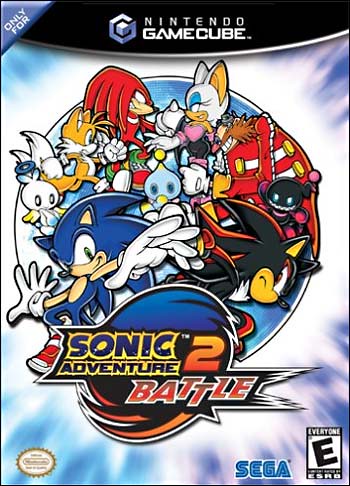
While both *Adventure* games were generally well received by critics and fans alike, with the first installment selling an impressive two million copies, consumer interest in the Dreamcast regrettably began to wane with alarming rapidity. Sega’s desperate attempts to stimulate sales through aggressive price reductions and enticing cash rebates only exacerbated escalating financial losses, signaling a challenging period for the company. In January 2001, Sega made a landmark announcement: it would discontinue the Dreamcast console and transition to becoming a third-party developer, a seismic shift in the video game industry. Following this pivotal decision, Hirokazu Yasuhara, another co-creator, departed to join Naughty Dog.
In December of the same year, Sega released an expanded port of *Sonic Adventure 2* for Nintendo’s GameCube, marking a significant step in its new third-party strategy. Subsequently, Sonic Team USA developed the very first multi-platform Sonic game, *Sonic Heroes* (2003), which saw release on the GameCube, Microsoft’s Xbox, and Sony’s PlayStation 2. This game was meticulously designed to appeal to a broad audience, and Sonic Team ingeniously revived classic elements not seen since the cherished Genesis era, such as thrilling special stages and the return of the fan-favorite Chaotix characters. Reviews for *Sonic Heroes* were mixed; while its vibrant graphics and engaging gameplay received commendation, critics felt it failed to adequately address persistent criticisms of previous 3D Sonic games, particularly concerning the camera system.
Takashi Iizuka, who directed *Heroes*, later revealed the immense stress he endured during its development, noting he lost 22 pounds (10 kg) due to the intense crunch conditions. Sonic Team also thoughtfully ported *Sonic Adventure* with additional content to the GameCube in 2003 and to Windows in 2004, though these ports received mixed reviews. Despite the focus on 3D, Sega continued its commitment to 2D Sonic games, maintaining a balanced portfolio for fans. In 1999, they collaborated with SNK to produce *Sonic the Hedgehog Pocket Adventure*, a faithful adaptation of *Sonic 2* for the Neo Geo Pocket Color, showcasing Sonic on a new handheld platform.
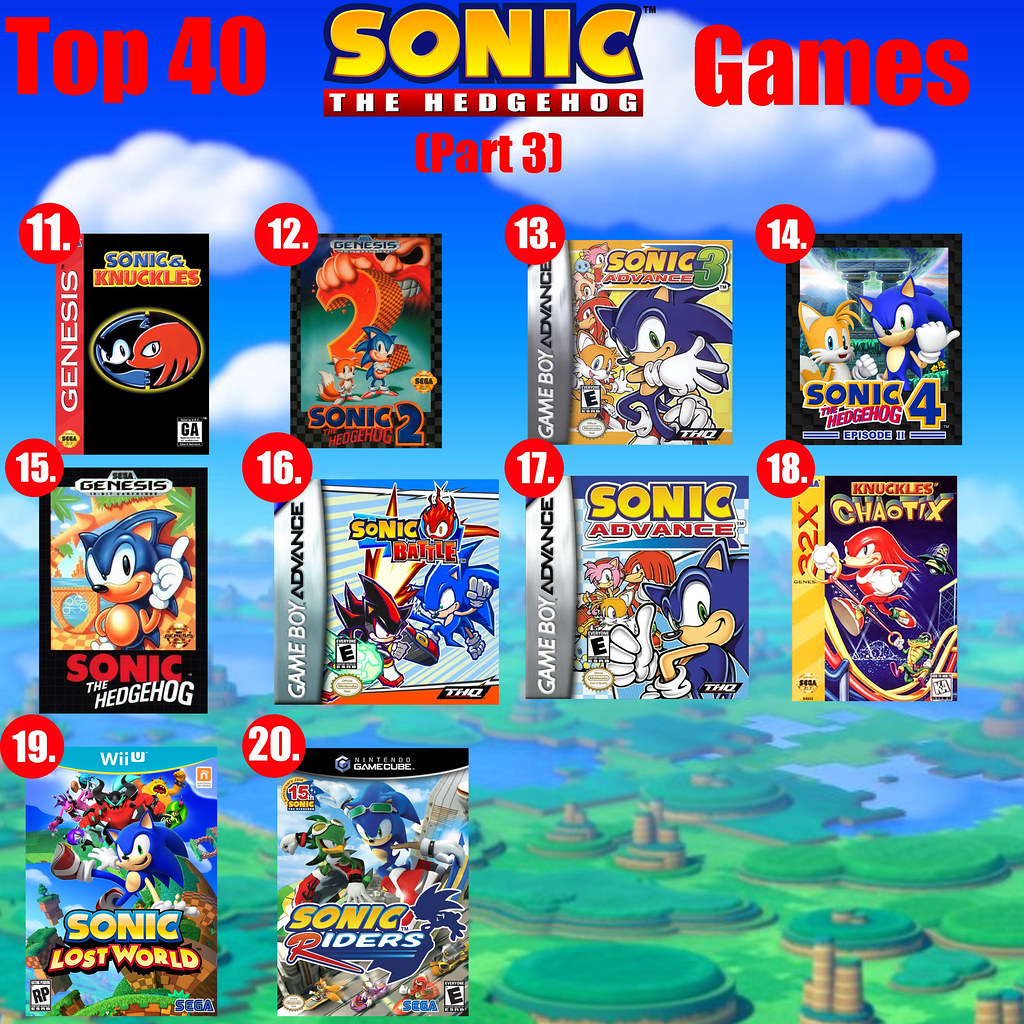
Some SNK staff later formed Dimps the following year, a studio that went on to develop a series of acclaimed original 2D Sonic games: *Sonic Advance* (2001), *Sonic Advance 2* (2002), and *Sonic Advance 3* (2004), all for Nintendo’s Game Boy Advance (GBA). *Sonic Advance* holds particular historical significance as it was the first original Sonic game released for a Nintendo console, a remarkable development given the fierce rivalry between Sega and Nintendo throughout the 1990s. Its development was outsourced to Dimps primarily because Sonic Team, at the time, was understaffed with employees intimately familiar with the GBA’s hardware and development environment. Dimps further expanded its contributions to the series by developing *Sonic Rush* (2005) for the Nintendo DS, a title that ingeniously utilized a 2.5D perspective, blending classic side-scrolling with modern visuals. Dimps’s projects consistently garnered generally favorable reviews, affirming their expertise in crafting compelling 2D Sonic experiences.
To effectively introduce older, classic games to new generations of fans, Sonic Team meticulously developed two comprehensive compilations: *Sonic Mega Collection* (2002) and *Sonic Gems Collection* (2005), offering an invaluable archive of the franchise’s rich history. Furthermore, Sega diversified the Sonic brand with additional spin-offs during this period, including the engaging party game *Sonic Shuffle* (2000), the entertaining pinball game *Sonic Pinball Party* (2003), and the dynamic fighting game *Sonic Battle* (2003), showcasing Sonic’s versatility across various genres.
Upon the completion of *Sonic Heroes*, Sonic Team USA underwent a significant rebranding, becoming Sega Studios USA, signaling a new chapter for the development house. During this period, both Sega and Sonic Team leadership experienced a flux, characterized by a willingness to experiment and diverge from the established Sonic formula, in an effort to innovate and adapt to changing market demands. Sega Studios USA’s inaugural project post-*Heroes* was *Shadow the Hedgehog* (2005), a highly anticipated spin-off starring the immensely popular character Shadow, first introduced in *Adventure 2*.
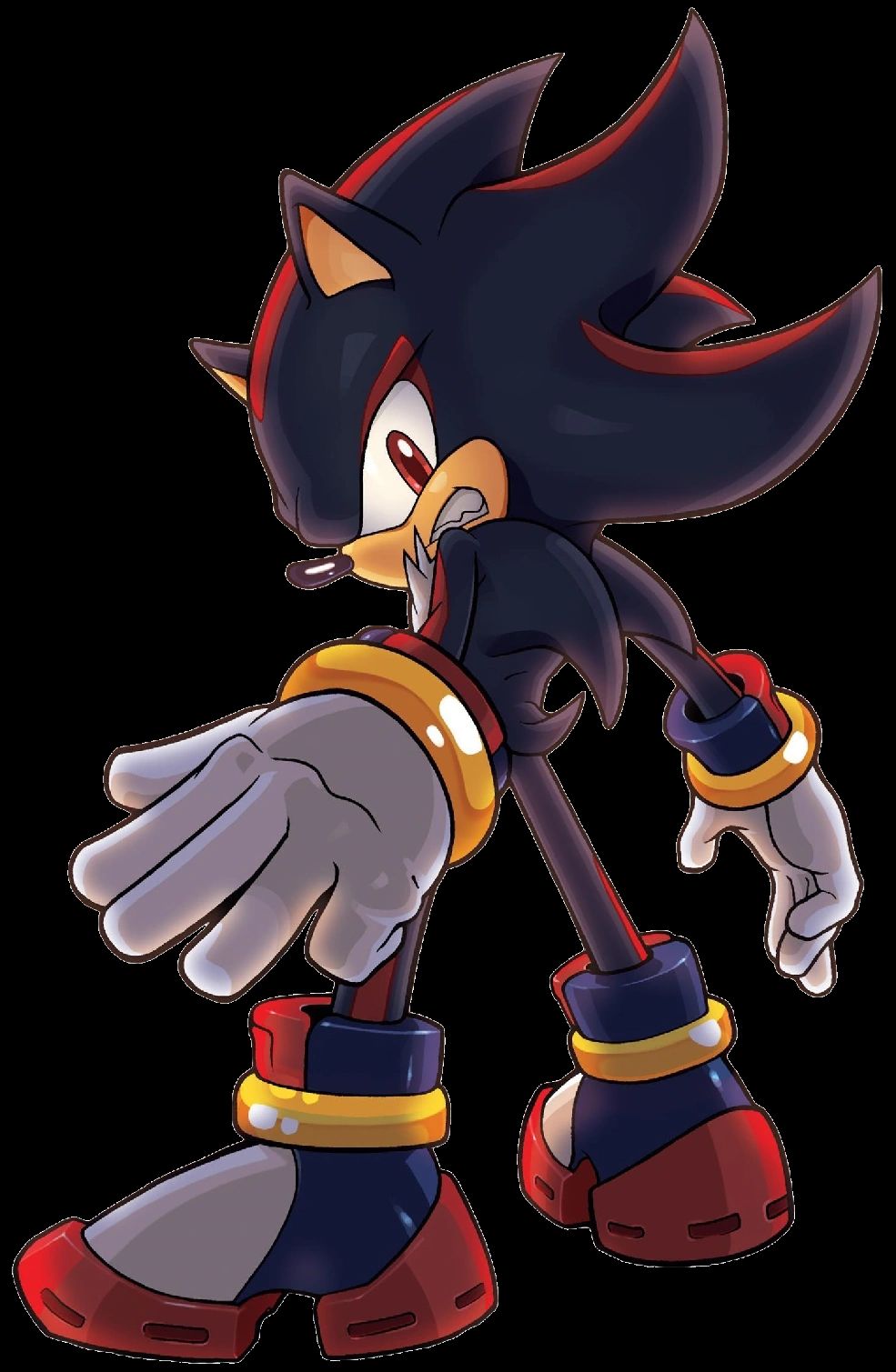
While *Shadow the Hedgehog* largely retained core elements from previous Sonic games, it was specifically aimed at a more mature audience, introducing intriguing new gameplay mechanics such as third-person shooting and a non-linear narrative structure. Despite its ambition, *Shadow the Hedgehog* was broadly panned by critics for its often-criticized controls, intricate level design, and the controversial inclusion of mature themes. However, surprisingly, it achieved considerable commercial success, selling at least 1.59 million copies, demonstrating the enduring appeal of its titular character.
In 2006, coinciding with the franchise’s significant 15th anniversary, Sonic Team developed *Sonic Riders*, a new racing game, and a GBA port of the original *Sonic* game, catering to diverse gaming preferences. Most notably, they released a bold reboot of the series, *Sonic the Hedgehog*, commonly referred to as *Sonic ’06*. This ambitious title featured a darker and more realistic setting than any preceding entries, and its primary intention was to relaunch the series triumphantly for the then-new seventh-generation consoles, including the Xbox 360 and PlayStation 3.
However, the development of *Sonic ’06* was fraught with severe problems from the outset. Yuji Naka, the last remaining member of the original Sonic development team, resigned as head of Sonic Team to establish his own studio, Prope, a significant loss for the team. Additionally, the development team itself was split to commence work on a separate Wii Sonic game, further fragmenting resources. According to Takashi Iizuka, these incidents, compounded by stringent Sega deadlines and an unpolished game engine, left Sonic Team with no option but to rush the development process, directly impacting the game’s final quality.
Regrettably, none of the 15th-anniversary Sonic games achieved critical success. *Sonic ’06*, in particular, became widely regarded as the worst game in the entire series, vehemently panned for its pervasive bugs, erratic camera, clunky controls, and convoluted story. Brian Shea of *Game Informer* incisively wrote that it “[became] synonymous with the struggles the Sonic the Hedgehog franchise had faced in recent years. Sonic [’06] was meant to be a return to the series’ roots, but it ended up damning the franchise in the eyes of many,” powerfully summarizing its disastrous impact.
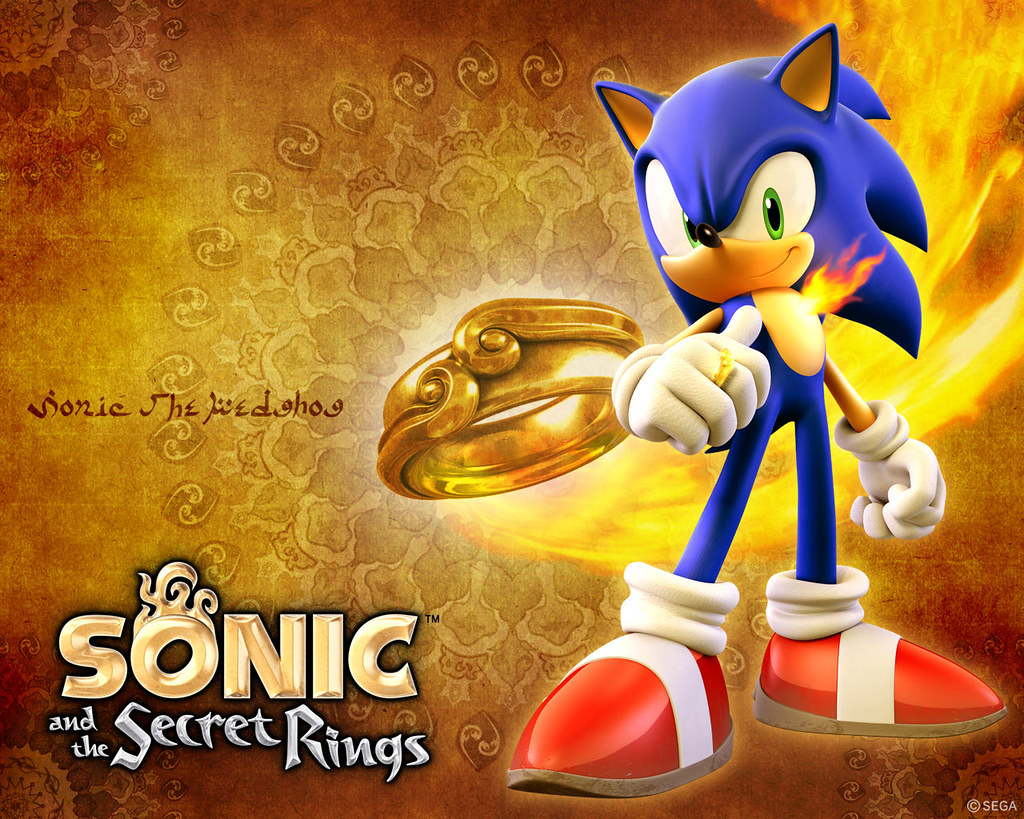
During this challenging period, Backbone Entertainment developed two Sonic games exclusively for the PlayStation Portable, *Sonic Rivals* (2006) and *Sonic Rivals 2* (2007), providing handheld thrills for fans. The first Sonic game for the Nintendo Wii, *Sonic and the Secret Rings* (2007), ingeniously transported Sonic into the mystical world of Arabian Nights and was released as an alternative to a direct port of *Sonic ’06*. Citing the lengthy development times associated with a full port, Sega strategically shifted its plans, conceiving a game that would fully leverage the innovative motion detection capabilities of the Wii Remote, offering a fresh gameplay experience.
Sega continued this narrative thread by releasing a captivating sequel, *Sonic and the Black Knight*, set in the legendary world of King Arthur, in 2009. Both *Secret Rings* and *Black Knight* collectively form what is affectionately known as the Sonic Storybook sub-series, offering unique thematic adventures. A sequel to *Sonic Riders*, titled *Zero Gravity* (2008), was also developed for the Wii and PlayStation 2, further expanding the racing genre within the franchise. Dimps returned to the Sonic series with *Sonic Rush Adventure*, a direct sequel to *Sonic Rush*, released in 2007, while BioWare developed the first true Sonic RPG, *Sonic Chronicles: The Dark Brotherhood* (2008), also for the DS, venturing into new gameplay territory.
Following Yuji Naka’s departure, Akinori Nishiyama, who had previously contributed significantly to the success of the *Sonic Advance* and *Rush* games, was appointed as Sonic Team’s general manager, bringing fresh leadership to the studio. Sonic Team began intensive work on *Sonic Unleashed* (2008) as early as 2005. This ambitious title was initially conceived as a direct sequel to *Adventure 2*, but it ultimately evolved into a standalone entry after Sonic Team integrated innovative elements specifically designed to distinguish it from the *Adventure* games and carve its own identity.
With *Unleashed*, Sonic Team diligently sought to combine the very best aspects of both 2D and 3D Sonic gameplay, simultaneously aiming to address persistent criticisms leveled against previous 3D entries. However, reviews for *Unleashed* remained mixed, primarily due to the controversial addition of a beat ’em up game mode where Sonic transforms into a powerful, werewolf-like beast, which divided fan and critic opinion. After Nishiyama’s promotion in 2010, Takashi Iizuka was instated as the esteemed head of Sonic Team, and crucially, became the series’ dedicated producer, a role he holds to this day, guiding Sonic’s future direction.
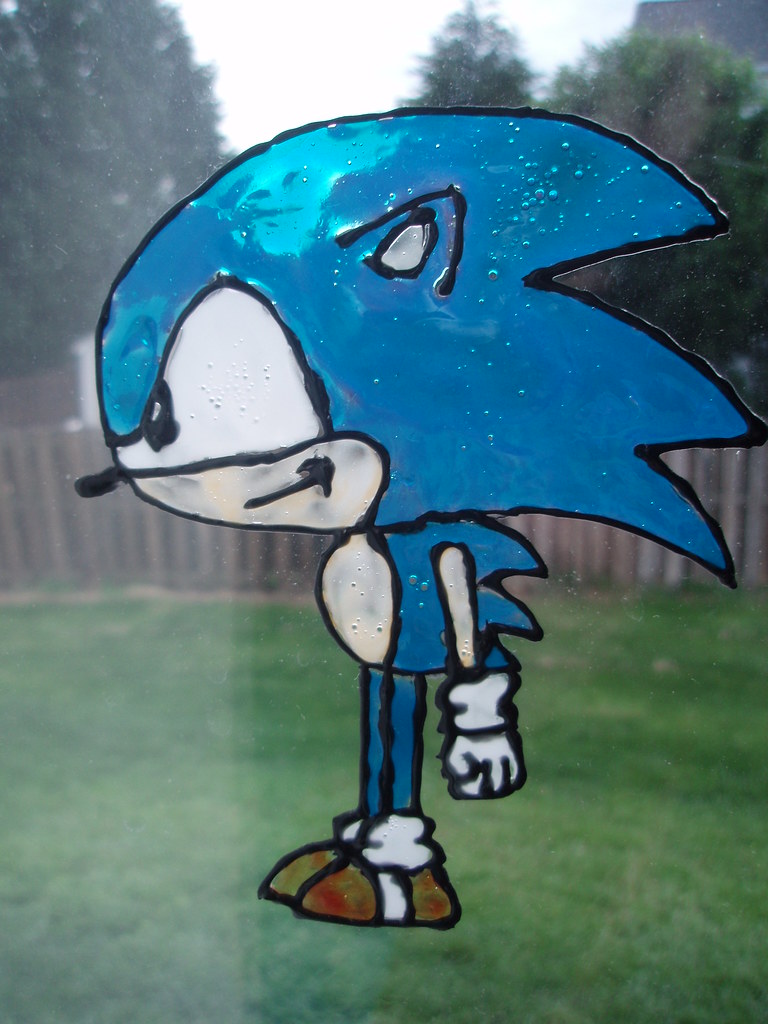
Takashi Iizuka, now firmly at the helm of Sonic Team and serving as the series’ producer since 2010, astutely observed that Sonic was struggling significantly due to a pervasive lack of unified direction across its various titles. In response to this critical assessment, Sonic Team purposefully refocused its development efforts, placing a renewed emphasis on more traditional side-scrolling elements and the fast-paced gameplay that defined the series’ early success. This strategic shift aimed to recapture the essence of what made Sonic truly iconic.
*Sonic the Hedgehog 4*, a side-scrolling episodic sequel directly building upon *Sonic & Knuckles*, was co-developed by Sonic Team and Dimps. It commenced with *Episode I* in 2010, followed by *Episode II* in 2012, offering fans a return to the classic 2D experience. Later in 2010, Sega released *Sonic Colors* for the Wii and DS, a game that skillfully expanded upon the well-received aspects of *Unleashed* and introduced the vibrant and versatile Wisp power-ups, adding a fresh layer of gameplay mechanics. For the series’ momentous 20th anniversary in 2011, Sega celebrated by releasing *Sonic Generations* for the Xbox 360, PlayStation 3, and Windows; a separate, equally compelling version was meticulously developed by Dimps for the Nintendo 3DS.
*Sonic Generations* was a celebratory masterpiece, featuring brilliantly reimagined versions of iconic levels from previous Sonic games and thrillingly reintroduced the beloved “classic” Sonic design from the Genesis era, much to the delight of long-time fans. These concerted efforts by Sonic Team were met with significantly better reception, especially when contrasted with the tumultuous periods surrounding *Sonic ’06* and *Unleashed*, signaling a positive turning point for the franchise. In May 2013, a significant announcement captivated the gaming world: Nintendo was officially collaborating with Sega to produce Sonic games exclusively for its Wii U and 3DS platforms, a testament to Sonic’s enduring appeal across console rivals.
The first title to emerge from this exciting partnership was 2013’s *Sonic Lost World*, which also held the distinction of being the first Sonic game developed for eighth-generation hardware. *Sonic Lost World* was meticulously designed for streamlined and fluid movement and level design, intentionally borrowing elements from Nintendo’s acclaimed *Super Mario Galaxy* games and even drawing inspiration from the ill-fated *X-treme*. The second game resulting from this groundbreaking deal was *Mario & Sonic at the Sochi 2014 Olympic Winter Games* (2013) for the Wii U, marking the fourth installment in the popular *Mario & Sonic* crossover series and serving as a timely tie-in to the 2014 Winter Olympics.
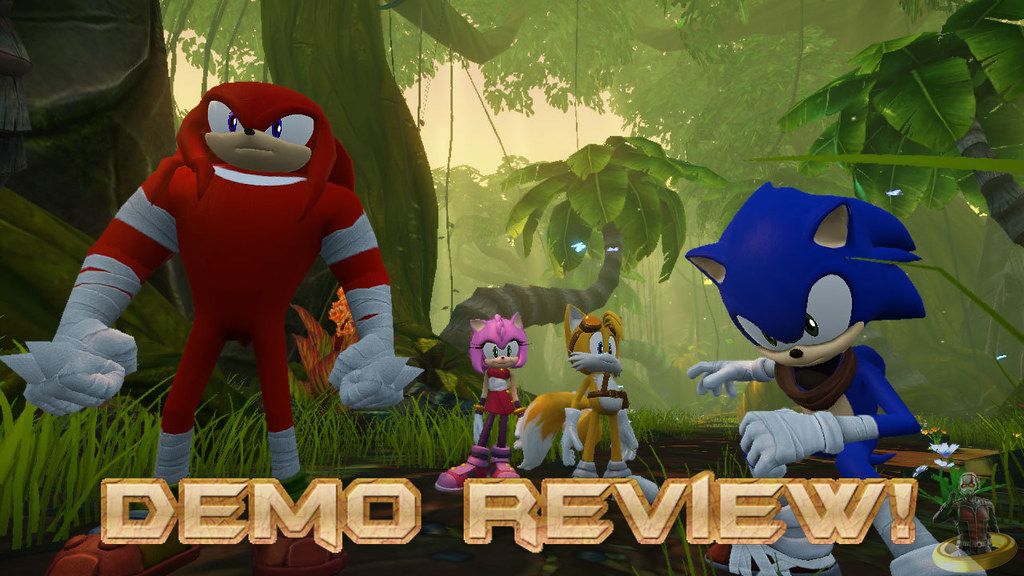
The Nintendo collaboration culminated in 2014 with the release of *Sonic Boom: Rise of Lyric* for the Wii U and *Sonic Boom: Shattered Crystal* for the 3DS. These titles were part of an ambitious spin-off franchise that notably included a companion television series and comic books, aiming to broaden Sonic’s media footprint. However, *Sonic Lost World* polarized critics, receiving mixed reviews, while *Mario & Sonic at the Sochi 2014 Olympic Winter Games* was largely considered mediocre. The *Sonic Boom* games, unfortunately, were widely panned, highlighting the challenges of diversifying the core franchise. A sequel to *Shattered Crystal*, *Sonic Boom: Fire & Ice*, was subsequently released in 2016.
Sega also strategically began to release a greater number of Sonic games for mobile phones, expanding the franchise’s accessibility to popular iOS and Android devices. A significant success story emerged after Australian programmer Christian “Taxman” Whitehead skillfully developed an acclaimed version of *Sonic CD* for modern consoles in 2011. He then partnered with fellow Sonic enthusiast Simon “Stealth” Thomley to craft meticulously developed remakes of the original *Sonic the Hedgehog* and *Sonic the Hedgehog 2* for iOS and Android, which were released in 2013.
These highly praised remasters were powered by Whitehead’s innovative Retro engine, an engine specifically tailored for crafting high-quality 2D projects, showcasing the enduring appeal of classic Sonic. *Sonic Dash* (2013), an engaging *Temple Run*-style endless runner developed by Hardlight, proved to be an astounding commercial success, accumulating over 350 million downloads by 2020. Its popularity led to a *Sonic Boom*-themed sequel in 2015, further extending its reach. Sonic Team also made its foray into mobile gaming with *Sonic Runners*, its first title for mobile devices, released in 2015. While *Sonic Runners* was also an endless runner, it unfortunately proved unsuccessful and was discontinued a mere year after its initial release. Gameloft subsequently released a sequel, *Sonic Runners Adventure*, in 2017, which received generally positive reviews.
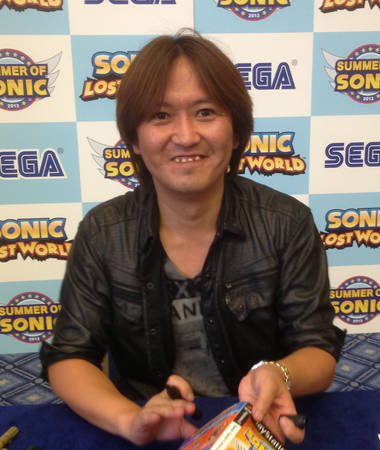
In a candid 2015 interview with *Polygon*, Takashi Iizuka openly acknowledged that contemporary Sonic games had been somewhat disappointing to fans and critics alike. He expressed a clear and ambitious hope that, from that point forward, the Sonic Team logo would unequivocally stand as a “mark of quality,” a symbol of excellence for players. His strategic plan involved consistently releasing high-quality games and thoughtfully expanding the iconic Sonic brand, all while meticulously retaining the modern Sonic design that had evolved over the years. To oversee this crucial strategic shift and invigorate the franchise, Iizuka and the majority of Sonic Team commendably relocated to Burbank, California, establishing a new team with a fresh perspective.
At San Diego Comic-Con in July 2016, Sega made a thrilling announcement that delighted fans worldwide: two new Sonic games would coincide with the series’ momentous 25th anniversary, promising a dual celebration of the blue blur. These highly anticipated titles were *Sonic Mania* and *Sonic Forces*. Both games were simultaneously released for the PlayStation 4, Xbox One, Nintendo Switch, and Windows in 2017, ensuring broad accessibility for players across multiple platforms. *Sonic Mania* was an extraordinary collaborative effort, developed by the independent game developers PagodaWest Games and Headcannon, with a dedicated staff comprising talented members of the passionate Sonic fandom.
Christian Whitehead, a key figure in the mobile remakes, not only conceived the project but also brilliantly served as its director, ensuring a faithful yet innovative experience. The game, which meticulously emulates the beloved gameplay and distinctive visuals of the original Genesis entries, was met with overwhelming critical acclaim, receiving the best reviews for a Sonic game in an impressive fifteen years, signaling a triumphant return to form for the classic style. Meanwhile, Sonic Team developed *Sonic Forces*, a title that skillfully revived the dual gameplay styles seen in *Sonic Generations*, and innovatively introduced a third, highly anticipated gameplay style featuring the player’s own customizable custom character.
While *Sonic Forces* received mixed reviews, particularly drawing criticism for its comparatively short length, it nonetheless offered a compelling new experience for fans. In 2019, Sega continued to expand the franchise with the release of *Team Sonic Racing* (2019), a dynamic kart racing game expertly developed by Sumo Digital, bringing competitive fun to the Sonic universe. In May 2021, Sega unveiled several exciting Sonic projects to commemorate the series’ significant 30th anniversary, promising a vibrant future for the franchise. These included a highly anticipated remaster of *Sonic Colors*, the comprehensive compilation *Sonic Origins*, and the groundbreaking 2022 release, *Sonic Frontiers*.
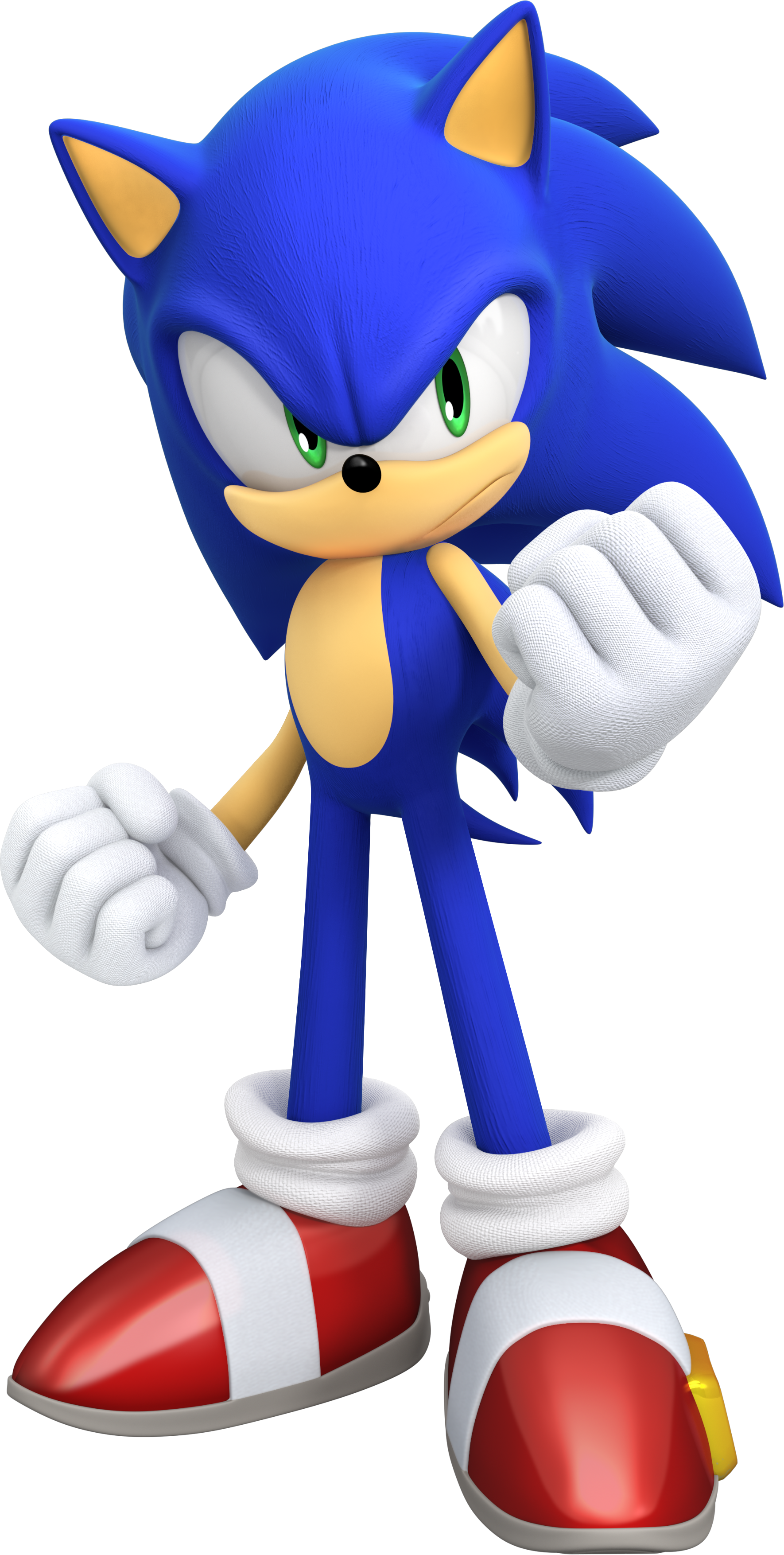
*Frontiers* marked a monumental step for the series, being the first Sonic game to feature an expansive open-world design, offering players unprecedented freedom to explore its vast landscapes. Takashi Iizuka expressed his genuine hope that *Frontiers* would inform the direction of future games in a similar transformative way that *Sonic Adventure* had done years prior, setting a new paradigm for the series. *Frontiers* received moderately positive reviews from both critics and dedicated fans, who largely considered it a flawed but ultimately solid and promising new direction for the beloved series, and it achieved strong sales, indicating its success.
The year 2023 saw a flurry of exciting Sonic releases, further demonstrating the franchise’s diverse appeal. These included *The Murder of Sonic the Hedgehog*, a charming and free visual novel that offered a unique narrative experience. Also released was *Sonic Dream Team*, an exclusive 3D platformer for Apple Arcade, catering to mobile gamers with a premium experience. Rounding out the year was *Sonic Superstars*, a visually stunning 2.5D side-scrolling game that delightfully featured the classic Sonic design, much to the appreciation of long-time fans. Notably, *Superstars* was co-developed by Naoto Ohshima’s studio Arzest, and Ohshima himself designed a captivating new character for the game, marking his first direct contribution to the series since the iconic *Sonic Adventure*.
Takashi Iizuka has thoughtfully indicated that the 2D and 3D Sonic games will continue to evolve independently going forward, with Sonic Team actively striving to keep them as distinct as possible, ensuring unique experiences for fans of both styles. The year 2024 has seen Sonic media heavily emphasize Shadow the Hedgehog, a fan-favorite character, as part of Sega’s impactful “Fearless: Year of Shadow” campaign. This comprehensive campaign includes the highly anticipated release of *Shadow Generations*, a focused short Shadow game bundled with a rerelease of *Sonic Generations*, providing a double dose of speed.

Sonic games traditionally center around Sonic’s relentless efforts to thwart Doctor Eggman’s elaborate schemes, which invariably involve the mad scientist attempting to obtain the Chaos Emeralds. These seven mystical gems, of extraterrestrial origin, possess awe-inspiring powers: they can literally turn thoughts into raw power, warp time and space through a technique known as Chaos Control, imbue living beings with immense energy, and even be harnessed to create devastating nuclear or laser-based weaponry. They typically serve as crucial MacGuffins, driving the overarching narratives of the stories.
Eggman relentlessly seeks these powerful Emeralds in his unyielding quest for world domination, frequently resorting to trapping innocent animals within aggressive robots and secure prison capsules. The initial inspiration for Sonic Team, drawing from the vibrant culture of the 1990s, instilled strong environmental themes within the Sonic franchise. Sonic himself powerfully represents “nature,” embodying freedom and the natural world, while Doctor Eggman stands in stark contrast, representing “machinery” and “development,” a poignant commentary on the then-growing debate between environmentalists and relentless developers.
Much of the beloved supporting cast was introduced in the succeeding games released for the Genesis and its various add-ons, enriching the Sonic universe with diverse personalities. *Sonic 2* charmingly introduced Sonic’s loyal sidekick, Miles “Tails” Prower, an endearing fox who possesses the remarkable ability to fly using his two distinct tails. *Sonic CD* unveiled Amy Rose, a spirited pink hedgehog who proudly proclaims herself Sonic’s girlfriend, and the menacing Metal Sonic, a formidable robotic doppelgänger of Sonic meticulously crafted by Eggman himself.
*Sonic 3* brought forth Sonic’s formidable rival, Knuckles, a valiant red echidna who serves as the stoic guardian of the Master Emerald. The Master Emerald, first introduced in *Sonic & Knuckles*, holds immense power, capable of controlling the very essence of the Chaos Emeralds. *Knuckles’ Chaotix* introduced the quirky and memorable Chaotix, a vibrant group comprising Vector the Crocodile, Espio the Chameleon, and Charmy Bee, adding a new dynamic to the team. While three characters introduced during this period—Mighty the Armadillo and Ray the Flying Squirrel from *SegaSonic the Hedgehog*, and Fang the Sniper from *Sonic Triple Trouble* (1994)—initially faded into relative obscurity, they have since become prominent characters once more in recent titles like *Sonic Mania* and *Superstars*, delighting long-time fans.
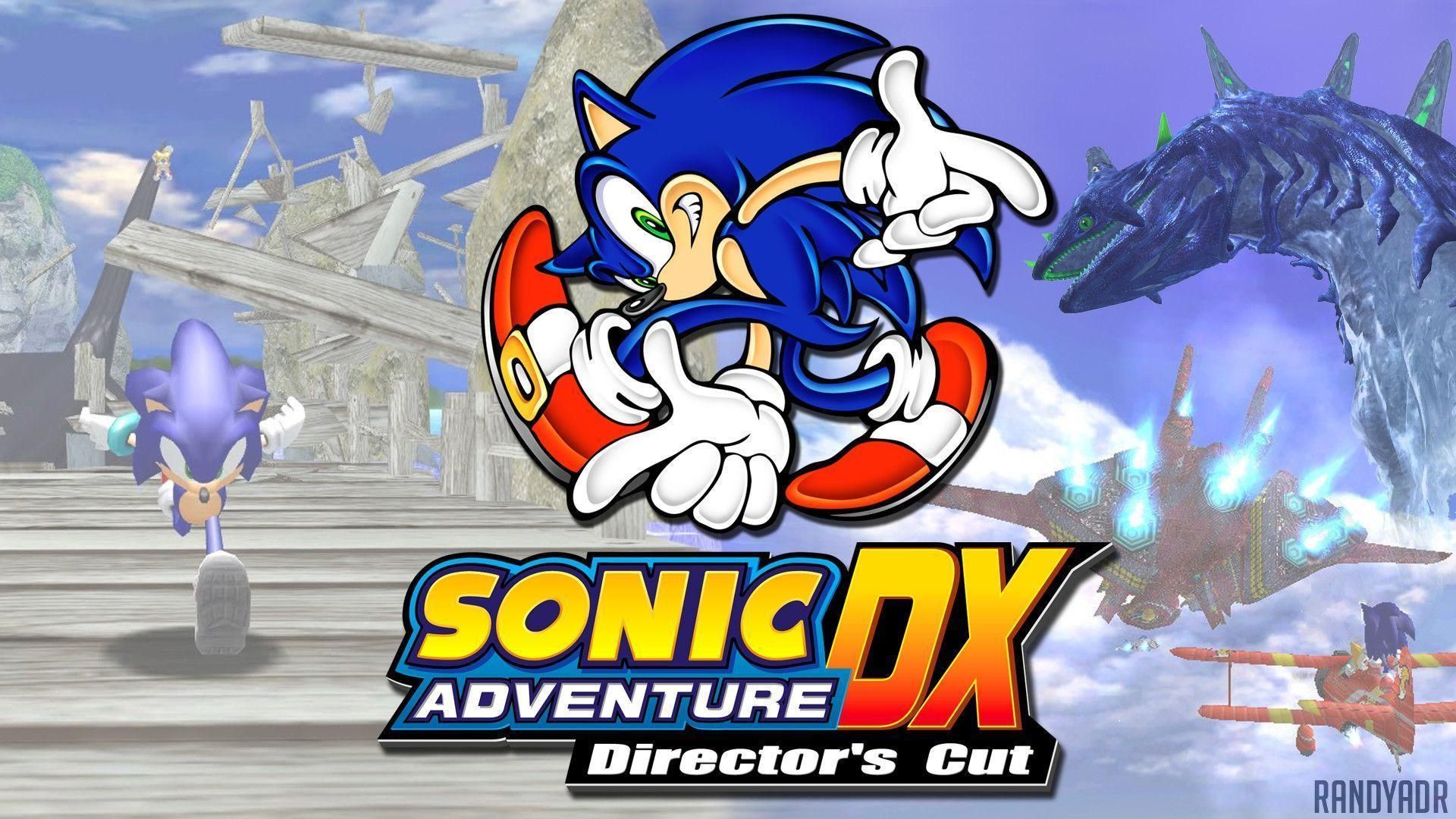
During the development of *Sonic Adventure*, Sonic Team made a crucial realization: the relatively simplistic character designs from the 2D era simply did not translate effectively to a complex 3D environment. To address this, the art style underwent a significant modernization, meticulously altering the characters’ proportions and refining their aesthetics to appeal more broadly to Western audiences, giving them a more contemporary and dynamic appearance. Since *Sonic Adventure*, the series’ cast has expanded considerably, welcoming a host of new and memorable personalities.
Notable additions include Big, a charmingly large cat known for his fishing endeavors with his pet frog, Froggy; the intricate E-100 Series of robots; Shadow, a brooding and enigmatic black hedgehog who quickly became a fan favorite; Rouge, a cunning treasure-hunting bat; Cream, a polite and innocent young rabbit; Blaze, a powerful cat hailing from an alternate dimension; and Silver, a telekinetic hedgehog who travels from the distant future to aid Sonic. The adorable Chao creatures function as charming digital pets and subtle minor gameplay elements, while the vibrant Wisp creatures serve as exciting power-ups, each offering unique abilities. Flicky, the iconic blue bird from Sega’s 1984 arcade game, makes endearing appearances in several Sonic games, particularly shining in *3D Blast*, connecting the franchise to Sega’s rich history.
Some Sonic characters have also brilliantly featured in their own dedicated spin-off games, further diversifying the franchise’s offerings. Doctor Eggman, for instance, is the central character of *Dr. Robotnik’s Mean Bean Machine*, a Western localization of *Puyo Puyo*, where Sega replaced the original *Puyo Puyo* characters with Sonic characters, fearing the Japanese puzzle game might not resonate with a Western audience on its own. In 1995, Sega released the Knuckles spin-off, *Knuckles’ Chaotix*, for the 32X, showcasing the echidna’s unique abilities.
Additionally, two Tails spin-offs for the Game Gear were released: *Tails’ Skypatrol*, a scrolling shooter, and *Tails Adventure*, an intriguing *Metroidvania*-style game, each offering different gameplay experiences centered around Sonic’s loyal sidekick. *Shadow the Hedgehog* (2005) was meticulously developed in direct response to the immense popularity of the Shadow character, and was designed to boldly introduce “gun action” gameplay to the franchise, pushing new boundaries for Sonic. Takashi Iizuka has tantalizingly suggested that future spin-offs, such as potential sequels to *Knuckles’ Chaotix* and *Shadow the Hedgehog*, or even a game starring Big the Cat, remain exciting possibilities, promising a dynamic future for the diverse cast.
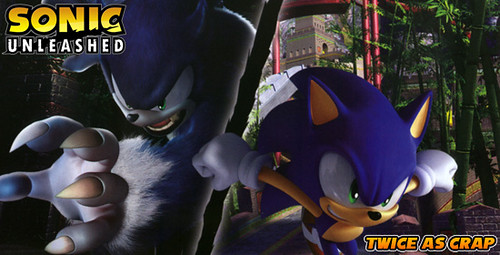
The Sonic series is fundamentally defined by its exhilarating speed-based platforming gameplay, a hallmark that sets it apart in the gaming landscape. Players expertly control the chosen character, navigating a thrilling series of levels at incredibly high speeds, skillfully jumping between platforms, engaging in dynamic battles against enemies and formidable bosses, and deftly avoiding a variety of challenging obstacles. The series seamlessly incorporates both classic 2D and immersive 3D games, offering distinct yet equally compelling experiences.
2D entries generally feature deceptively simple, yet addictive, pinball-like gameplay, where core actions like jumping and attacking are often controlled by a single, intuitive button. These levels are characterized by intricately designed branching paths, frequently requiring players to rely on memorization to maintain their blistering speed and achieve optimal performance. In stark contrast, 3D entries tend to adopt a more linear design, offering a wider variety of level objectives, distinct movesets for different characters, and empowering players with the ability to upgrade and customize their playable characters, adding layers of depth and personalization.
Games released since *Sonic Unleashed* have skillfully blended both 2D and 3D gameplay perspectives, with the camera dynamically shifting between traditional side-scrolling and immersive third-person views, creating a fluid and exciting experience. One of the most distinctive and iconic game mechanics in Sonic titles is the collectible golden rings, strategically scattered throughout the levels. These rings serve a crucial function as a form of health; players who possess rings can miraculously survive sustaining damage, although the rings are then scattered, and the player has a short, frantic window to recollect some of them before they vanish forever. Typically, collecting 100 rings generously rewards the player with an extra life, encouraging thorough exploration.
Rings often possess additional uses in certain games, such as serving as currency in *Sonic ’06*, restoring health bars in the intense combat sequences of *Sonic Unleashed*, or even improving character statistics in the competitive racing of *Sonic Riders*, showcasing their versatile utility. Levels across the Sonic series are replete with signature elements like exhilarating slopes, perilous bottomless pits, and gravity-defying vertical loops, all contributing to the sense of breakneck speed. Springs, springboards, and dash panels are strategically placed throughout the environments, catapulting the player at high speeds in precise directions, maintaining the thrilling momentum.
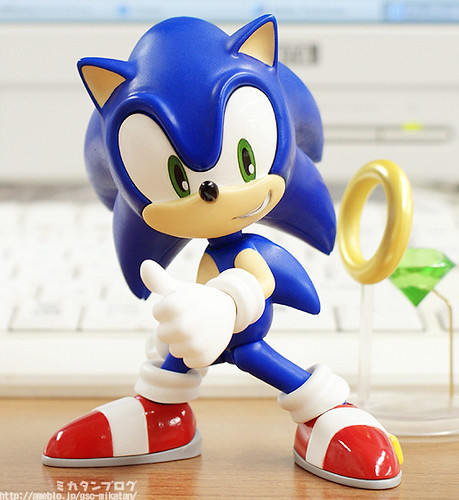
Players’ progress within levels is meticulously saved through the strategic placement of checkpoints, providing essential respawn points. These checkpoints often serve additional functions in various games, such as granting access to exciting bonus stages, further rewarding skillful play. Certain iconic settings, particularly the vibrant Green Hill Zone, consistently recur throughout the series, serving as a comforting and nostalgic anchor for longtime fans while introducing new players to the franchise’s enduring visual identity.
The series boasts a rich array of power-ups, conveniently contained within distinct item boxes that are strategically distributed across the levels. An intuitive icon on the box clearly indicates its contents, and players can easily release the item by simply destroying the box, adding a layer of interactive discovery. Common and highly sought-after items found within these boxes include additional rings, protective shields, temporary invincibility, bursts of high speed, and crucial extra lives, all designed to aid the player in their high-speed adventures.
*Sonic Colors* brilliantly introduced the Wisps, an intriguing race of extraterrestrial creatures that function as dynamic power-ups, each imbuing Sonic with unique abilities. Every Wisp possesses its own special power, directly corresponding to its vibrant color; for instance, the cheerful yellow Wisps empower players to expertly drill underground, uncovering otherwise inaccessible areas and hidden pathways, encouraging exploration. Since the release of *Sonic Rush*, the majority of Sonic games have incorporated the exhilarating “boosting” mechanic, a powerful ability that instantly propels Sonic forward at his maximum speed when activated.
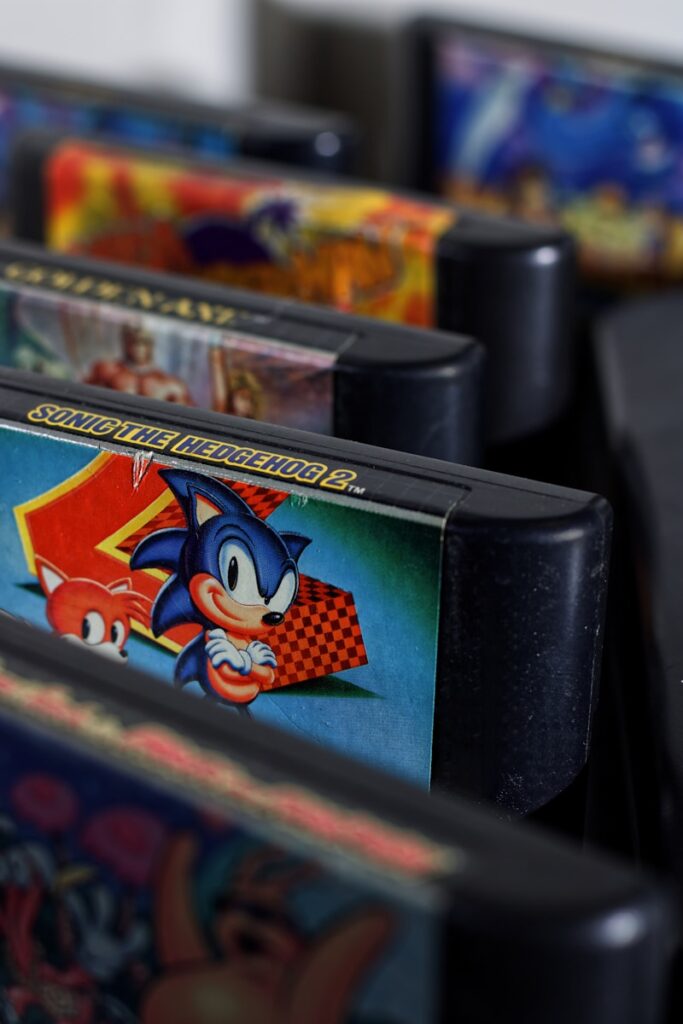
While boosting, Sonic can effortlessly smash through obstacles, instantly destroy enemies in his path, or access entirely different level paths, rewarding quick reflexes and strategic activation. This mechanic inherently demands that players react with incredible speed to forthcoming obstacles, maintaining the high-octane flow of gameplay. *Sonic Unleashed* thoughtfully introduced side-stepping and drifting maneuvers, providing players with additional tools to expertly maintain their speed and navigate treacherous environments with precision. The boosting capability is thoughtfully limited by a gauge, which players can replenish by collecting more rings or by absorbing the energy of Wisps, creating a rewarding cycle of resource management and strategic speed bursts.
In the vast majority of Sonic games, the ultimate overarching goal is the collection of the powerful Chaos Emeralds. Players are typically required to gather all seven of these mystical gems to effectively defeat Doctor Eggman and unlock the games’ coveted “good” endings, providing a clear objective for their high-speed adventures. Sonic games that do not feature the Chaos Emeralds, such as the innovative *Sonic CD*, instead incorporate different collectibles that functionally serve the same purpose, guiding the player’s progress and unlocking new content. Players can typically discover the Emeralds by entering special portals, opening these portals by collecting a specific number of rings (often 50), or by meticulously scouting for them directly within the levels themselves, rewarding observant players.
Occasionally, the Emeralds are conveniently collected automatically as the compelling story progresses, integrating them seamlessly into the narrative. By successfully collecting all the Chaos Emeralds, players are generously rewarded with their characters’ powerful “Super” form, an iconic transformation that can be activated by collecting 50 rings within a stage. These Super transformations grant the player character enhanced speed, a significantly farther jump, and temporary invincibility, making them a force to be reckoned with. However, this power comes at a cost, as their ring count steadily drains by the second, and the transformation lasts only until all the rings have been consumed, creating a thrilling race against time. Some games critically require the player to gather all the Chaos Emeralds to even gain access to the climactic final boss encounter, adding an extra layer of challenge and objective.

While many Sonic games share fundamental gameplay mechanics, certain titles feature unique innovations that distinguish them, offering fresh experiences within the familiar framework. For instance, *Knuckles’ Chaotix* shares similarities with previous entries in the series, but innovatively introduces a partner system where the player is dynamically connected to another character via a tether. This tether behaves remarkably like a rubber band, and its elastic properties must be cleverly utilized to maneuver both characters effectively, demanding a new level of coordination and strategic thinking.
*Sonic Unleashed* introduced the distinctive Werehog form, a beat ’em up gameplay style where Sonic transforms into a powerful, werewolf-like beast. In this state, he must engage in direct combat with enemies using brute strength, offering a significant departure from his traditional speed-based combat. Both the unique Sonic Storybook games feature concepts that truly set them apart: *Secret Rings* is controlled exclusively using the Wii Remote’s intuitive motion detection, providing an immersive new way to play, while *Black Knight* ingeniously incorporates hack-and-slash gameplay elements, transforming Sonic into a medieval knight. While some games feature Sonic as the sole playable character, others offer the exciting option of multiple playable characters, each boasting alternate movesets and distinct storylines, significantly enhancing replayability and offering varied perspectives within the rich Sonic universe.
From its humble beginnings as Sega’s answer to a rival mascot, the Sonic the Hedgehog franchise has roared through the decades, enduring challenges and embracing innovation to become a truly global phenomenon. Its legacy is etched into the very fabric of gaming, influencing countless titles with its iconic speed, vibrant characters, and memorable worlds. Sonic’s journey is a testament to the power of imagination and the unwavering dedication of creators and fans alike. As new directions are explored and fresh adventures unfold, one thing remains crystal clear: the blue blur’s incredible run is far from over. The future promises even more high-speed thrills and unforgettable moments for generations of gamers to come.


